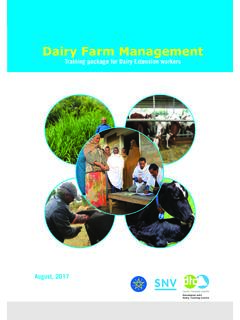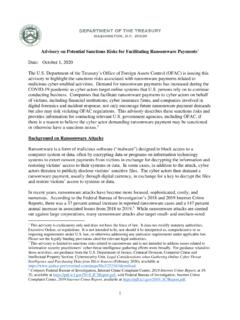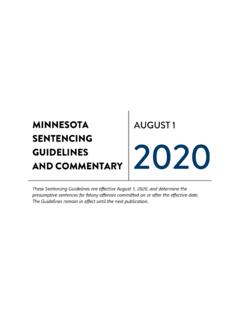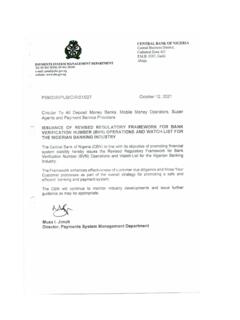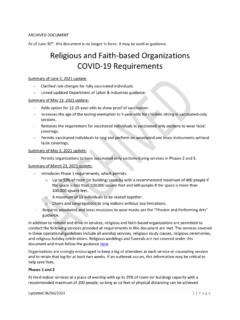Transcription of Behaviour Change Communication Guidelines
1 Behaviour Change Communication GuidelinesSNV | WASH 2016 SUSTAINABLE SANITATION & HYGIENE FOR ALLA pril 2016 SSH4A | SNViGlossary of Key Terms ii1 Background 1 Sustainable Sanitation and Hygiene for All (SSH4A) 1 Purpose of these Guidelines 52 Introduction to Behaviour Change Communication 6 Hygiene promotion developments in the sector 6 What is evidence-based Behaviour Change Communication ? 8 Understanding behaviours 9 Communication as a process 9 Use of frameworks to understand behavioural determinants 10 Current challenges in BCC in practice 133. Process of Designing Behaviour Change Communications 164. The BCC Component of SSH4A 19 Objective of the BCC Component 19 Capacity development process 19 With whom to work on BCC? 20 Summary of key steps in evidence-based Behaviour Change Communication component 22 Monitoring impact, outcomes and effectiveness 265. Frequently asked questions regarding the BCC component 306.
2 Key resources 34 Reference documents 34 Synthesis Reports of Formative Research 35 Online resources and toolkits 35 Table of ContentsSustainable Sanitation & Hygiene for AllSNV | SSH4 AiiGlossary of Key TermsAbility An individual s skills and proficiency to carry out a certain Behaviour . Determinants groups within ability include knowledge, social support, skills and self-efficacy, roles and decisions and Change Communication is an approach to hygiene promotion that uses an in-depth understanding of people s Behaviour to design persuasive determinants are the factors that may influence whether an individual has the opportunity, ability and motivation to engage in a given hygiene or sanitation Behaviour . Behavioural determinants can either facilitate or inhibit Behaviour of interest among a certain population and can be internal or channel is a medium through which a message is transmitted to its intended audience, such as print media or Led Total Sanitation (CLTS) is an innovative methodology for mobilising communities to completely eliminate open defecation (OD).
3 Communities are facilitated to conduct their own appraisal and analysis of open defecation (OD) and take their own action to become ODF (open defecation free).Drivers are strong internal thoughts and feelings that motivate Behaviour . They can be positive or negative, and can stem from unmet physical, emotional, or psychological needs. In CLTS for example the negative driver of disgust is used as the Behaviour and population: The Behaviour that needs to be changed, such as ceasing open defecation, upgrading to hygienic latrines and handwashing with soap. The group targeted to adopt the identified Behaviour . Formative research is research carried out to provide information to plan intervention programmes. In this context it is the basis for developing effective strategies, including Communication channels, for influencing Behaviour Change . It helps to identify and understand the characteristics of target populations that influence their decisions and has been defined as an approach which attempts to Change or reinforce a set of behaviours in a target audience regarding a specific problem in a predefined period of time using information, education and are interpersonal communications, , face-to face communicationsSSH4A | SNViiiHealth promotion is the process of enabling people to increase control over the determinants of health and thereby improve their health.
4 This definition is based on the World Health Organization Ottawa Charter education involve activities aimed at raising awareness and conveying knowledge of the links between hygiene practices and promotion is a planned approach that aims to reduce the incidence of poor hygiene practices and conditions that pose the greatest risk to the health of children, women and : The drives, wishes, urges or desires that influence an individual to act out a certain Behaviour . Determinants within motivation include attitudes and beliefs, values, emotional/physical/social drivers, competing priorities, intention and willingness to pay Opportunity as a group of behavioural determinant refers to the institutional or structural factors that influence an individual s Behaviour . Determinants within opportunity include access/availability, product attributes, social norms and stands for Participatory Hygiene and Sanitation Transformation.
5 It is an innovative approach designed to promote hygiene behaviours, sanitation improvements and community management of water and sanitation facilities using specifically developed participatory Water, sanitation and Sanitation & Hygiene for AllSSH4A | SNV11. Background Sustainable Sanitation & Hygiene for Sustainable Sanitation & Hygiene for AllSustainable Sanitation & Hygiene for All (SSH4A) is SNV s comprehensive approach for area-wide sanitation and hygiene services. Developed since 2008 in Nepal, Bhutan, Cambodia, Vietnam and Laos with IRC, the SSH4A approach is now implemented with rural communities in over 75 districts across 15 countries, contributing to progress in Asia and Africa. In 2011 it was adapted and expanded to urban contexts in Bhutan, then Nepal, Indonesia and Bangladesh as Urban Sanitation and Hygiene for Health and Development . The focus is on the development of capacities and approaches that can be scalable through a government-led, district-wide approach.
6 The SSH4A programme is comprised of four complementary components supported by knowledge and learning as illustrated in the diagram below for both rural and urban contexts. In both the rural sanitation and hygiene approach, as well as in the urban sanitation and hygiene approach, evidence-based behavioural Change Communication is a key component. Hence, the importance of these Guidelines for both Purpose of these Guidelines Since 2008, the programme has been working to introduce and build capacity in behavioural Change Communication methodologies at local level, with the active involvement of local and national agencies. The approach with the line agencies has consisted of a participatory review of existing information, education and Communication (IEC) or hygiene promotion work, definition of priority behaviours (primarily HWWS and hygienic usage) based on survey data, developing skills in formative research, development of BCC strategies, design of messages and campaigns and, finally, monitoring effectiveness.
7 The work on BCC has been supported by a structured learning process including: Regional learning events first in Laos in 2010, which introduced the participants to the use of FOAM and SaniFOAM, as well as barrier analysis, and then in follow-up in Bhutan in 2015; Subsequent comparative studies (2010; 2015), D-group discussions; and Draft BCC Guidelines , purpose of these revised Guidelines is to document the current thinking of the programme informed by this learning process and provide guidance to the SNV teams and partners engaged in the process of capacity development in BCC. They seek to complement existing resources available in the sector. Specific institutional and cultural contextSutainable sanitation & hygiene for allHygiene behavioural Change comunicationSanitation supply chains & financeSanitation demand creationWASH governanceBCC and awarenessSafe and affordable servicesTreatment, disposal and re-useWASH governance regulations and enforcementSmart nance and investmentUrban Sanitation and Hygiene for Health and DevelopmentSNV | Hygiene promotion developments in the sectorWithin the WASH sector there is an increasing understanding that hygiene promotion requires more than business-as-usual approaches.
8 Whilst in practice there are still many health-based blanket campaigns and IEC material-based approaches, there is a growing consensus in the sector that hygiene promotion should be Behaviour centred with focused messaging and there is research seeking to identify universal drivers. Some organisations tend to favour a desirable technology as the trigger for action and use social marketing to make it desirable. A variation of this approach is Unilever s work on making soap desirable. Other organisations have relied strongly on social empowerment and reflection approaches. The question whether we can expect universal answers, guidance or solutions is ongoing. While this may make our work easier to scale (in theory), the local context cannot be overlooked. CLTS basically proposes one universal driver ( disgust ), an almost universal approach and an almost universal set of Introduction to Behaviour Change Communication Some say that a number of drivers are universal for humankind, namely those in the most basic part of the brain that relate to human survival.
9 For example, Val Curtis from the London School of Hygiene and Tropical Medicine (LSHTM) says that behavioural determinants like disgust and nurture (the drive to care for children) could well be universal to humankind (See the Evo-Eco model1 and the SuperAmma campaign2) The research that this group is doing may well result in a number of almost universal drivers that others can simply take and adjust. Another aspect of this set of work is that a lot of our hygiene behaviours are part of a particular setting and a routine. The idea is that a new Behaviour should fit within a routine in order to be work on triggering handwashing tends to assume that drivers are similar throughout (most of) the world, and also that the same tools can be used. One could even say that approaches based on empowerment, such as PHAST, assume that empowerment is a universal motivator or driver, or at least that the approach is locally specific100% locally specific100% locally specific100% locally specificDriversMessagesApproachesToolsUn iversalUniversalUniversalUniversal1.
10 | SNV32. Introduction to Behaviour Change What is Evidence-based Behaviour Change Communication ?Before we start, it may be good to clarify what Evidence-based Behavioural Change Communication is. Communication aiming to influence personal hygiene Behaviour has been part of health and WASH programmes for a very long time. Yet, data on hygiene Behaviour practices remains alarming. When we look at Communication approaches over time, we can see a trend moving from informational and educational Communication towards more persuasive Communication influenced by marketing approaches. In the past, a lot of our Communication aimed to inform and educate people about the dangers of improper hygiene Behaviour and to teach people what good practices are. Knowledge, Attitude and Practices (KAP) studies were used to map out where the gaps were. However, the time to go deep into attitudes and beliefs was limited.


